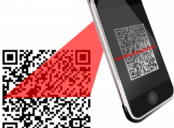Exploring the Evolution and Importance of Thermometer App for Tech-Enthusiasts

Introduction to Thermometer App and Its Significance
As technology continues to shape various aspects of our lives, the emergence of thermometer apps has revolutionized the way we monitor and track temperature. These digital tools offer convenience and accuracy, allowing users to measure their body temperature, monitor weather conditions, and even control home thermostats, all from the comfort of their smartphones. In this comprehensive article, we delve into the world of thermometer apps, exploring their history, development, and the key factors one should consider before choosing the right app.
The Evolution of Thermometer Apps: A Historical Overview

Thermometer apps have come a long way since their inception, and understanding their evolution provides valuable insights into their current functionalities and capabilities. Initially, thermometer apps were limited to providing basic temperature measurements using the built-in sensors of smartphones. However, with advancements in technology and the increasing demand for comprehensive health monitoring tools, these apps have evolved significantly.
Over time, thermometer apps have incorporated features such as real-time temperature tracking, historical data analysis, and integration with wearables and smart devices. Furthermore, the introduction of artificial intelligence and machine learning has enhanced the accuracy and efficiency of these apps, enabling more precise temperature readings and intelligent health insights. Today, thermometer apps offer a wide range of functionalities that cater to different needs and preferences.
Understanding the Key Features and Considerations
Before diving into the world of thermometer apps, it is essential to understand the key features and factors to consider when selecting the right app. Here are some important aspects to keep in mind:
1. Accuracy: The primary purpose of a thermometer app is to provide accurate temperature readings. Ensure the app utilizes advanced sensors or algorithms to increase accuracy.
2. User-Friendly Interface: Look for apps with intuitive interfaces that are easy to navigate. A clutter-free layout and clear instructions enhance the overall user experience.
3. Real-Time Data and Notifications: Consider apps that offer real-time temperature tracking, as well as alerts and notifications for significant changes. This feature can be particularly useful for monitoring fever or unexpected weather fluctuations.
4. Historical Data Analysis: Some apps provide detailed reports and analysis of temperature trends over time. This feature can assist users in identifying patterns or potential health concerns.
5. Integration with Wearables and Smart Devices: Apps that can synchronize with wearables or smart home devices provide a seamless temperature monitoring experience. Users can monitor their health or adjust home thermostats effortlessly.
6. Privacy and Security: Ensure the app follows stringent privacy protocols and does not compromise personal data. Look for apps with secure data storage and encryption measures.
The Impact of Thermometer Apps on Health Monitoring
Thermometer apps have not only transformed temperature monitoring but have also made a significant impact on health monitoring as a whole. The portability and accessibility of these apps have allowed individuals to monitor their health more effectively, particularly in situations where dedicated thermometers may not be readily available.
Additionally, thermometer apps with intelligent health tracking capabilities have become invaluable tools for individuals with medical conditions that require regular temperature monitoring. Patients can now easily record and share their temperature readings with healthcare professionals, enabling more accurate diagnoses and efficient treatment plans.
Future Developments and Possibilities
Thermometer apps have tremendous potential for further innovation and integration in the future. As technology advances, we can anticipate more sophisticated sensor technology, such as infrared sensors, being incorporated into smartphones, enhancing temperature detection accuracy.
Moreover, the integration of thermometer apps with health monitoring wearables and smart homes could revolutionize temperature control and health management systems. Imagine a world where your smart home adjusts the temperature based on your individual preferences and health condition, all seamlessly synchronized with your smartphone.
In conclusion, thermometer apps have become indispensable tools for individuals seeking convenient and accurate temperature monitoring solutions. With their evolution, features like real-time data, historical analysis, and integration with wearables, these apps have expanded their functionalities beyond simple temperature measurements. As technology advances, the future holds even more exciting possibilities for thermometer apps, further enhancing our ability to monitor and manage our health effectively. So, harness the power of thermometer apps and embrace a more streamlined approach to temperature monitoring and health management.





















